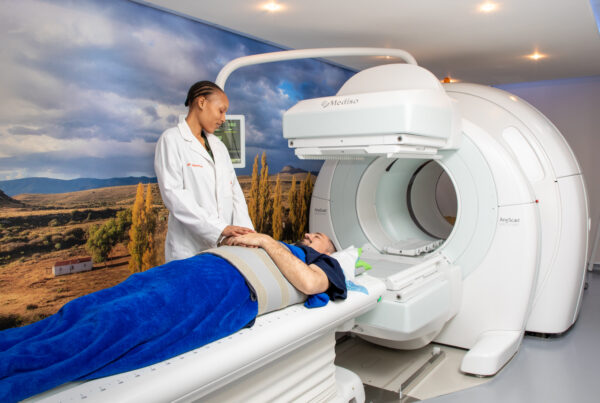I am not sure about you, but I was pretty alarmed to read about a recent case in the United States which reignited global concerns about the potential dangers of aesthetic treatments. In this instance, a mother of three from Georgia was left partially paralyzed after having her routine botulinum toxin injection. She developed a severe migraine immediately afterward and was hospitalized the next day unable to speak or function. Doctors later told her she had suffered small strokes.
How Safe Are Your Cosmetic Injectables?
Many specialists will concur that such extreme complications are uncommon. However, the case points to the importance of ensuring that any injectable procedure is performed by a qualified, experienced medical professional in a reputable clinic.
Dr. J.D. Erasmus, MBChB (UFS) B.Sc. (UP), is a general practitioner with a special interest in aesthetics and the Head of Aesthetics at the Longevity Centre at RXME. He says fears of botulism from botulinum toxin injections are largely misplaced, especially when the treatment is carried out correctly.
What is a toxin and are all toxins toxic?
“People hear the word ‘toxin’ and understandably get nervous. But iatrogenic botulism (caused by a medical treatment) after aesthetic treatments is extremely rare in medical clinics with qualified doctors who follow proper protocols and only inject trusted products from regulated manufacturers,” he notes.
He adds that botulinum toxin is one of the most extensively studied anti-aging treatments in aesthetic medicine. It works by relaxing targeted facial muscles, tightening and rejuvenating the skin, smoothing lines and wrinkles, and can even help relieve tension headaches.
“In cosmetic treatments, it’s used in very small, highly controlled doses by trained professionals. When done correctly, it stays where it’s injected, does its job, and your body naturally breaks it down over time. The horror stories we hear are almost always linked to unqualified practitioners, dangerously high doses, and fake or unregistered products, and are not the work of reputable doctors.”
The Dangers of Botox
In cases of iatrogenic botulism from botulinum toxin injections, the toxin moves further than the treatment area and causes muscle weakness. This is an unusual complication rarely seen in aesthetic injections. Botulism in all its forms – which can result from contaminated food, infected wounds, or other sources – occurs in less than one in 100,000 cases.
“Globally, thousands of people undergo botulinum toxin procedures safely every day.”
Cases may vary by country, Fir example the country Dr Erasmus practices in, South Africa, has no recorded adverse events.
Risks vary by country
However, risks will increase in countries where regulations are weaker. In one extreme case in Turkey two years ago, 71 people developed iatrogenic botulism from botulinum toxin injections in just over a month, and 66 of those cases were traced to the same clinic.
“That’s the danger of medical or cosmetic tourism to poorly regulated markets. You don’t always know what product is being used, who is injecting it, or whether proper safety standards are being followed, and you can’t always follow up with your practitioner if you have any concerns after the procedure.”
Dr. Erasmus adds that these types of incidents are important reminders to take your health seriously and instead choose a clinic you can trust: “Before booking a treatment, check your practitioner’s qualifications and reputation, and make sure that the facility follows stringent product quality and safety regulations.”
Regulations Are Important
The danger is that some well-known medical tourism hubs advertise package deals that bundle flights, hotel stays, and same-day treatments at prices local doctors cannot match. And while many foreign facilities operate responsibly, others might exploit regulatory gaps, employ non-medical injectors, or import high-potency botulinum toxins in bulk.
According to Dr Erasmus, in South Africa the strict regulations help prevent the kind of misuse seen in some other countries.
Botulinum toxin injections are classed as a Schedule 4 medicine approved by the South African Health Products Regulatory Authority (SAHPRA), or the Food and Drug Administration (FDA) in America.
Only doctors registered with the Health Professions Council of South Africa (HPCSA) can buy and inject it, and distributors need special permits from SAHPRA to sell it. Additionally, doctors in regulated markets receive extensive training to ensure injections are performed accurately and safely.
Track and tracing of product
Responsible clinics ensure that every step is carefully controlled, from storing vials at the exact right temperature to mixing them in sterile conditions. They also log batch numbers and safely discard any leftover product after a set time. This keeps the product safe and creates a full record of its use.
Licensed practitioners also follow other important safety steps: assessing each patient to make sure injections are suitable for them, calculating the correct dose for the best results with minimal risk, staying up to date with training, and using only approved products from authorized suppliers.
Who is injecting your botox?
This really matters! Dr. Erasmus recommends that patients check that their chosen practitioner is registered with an official medical association (in South Africa it is the) that governs ethics and governances.
Patients should also ask to see the unopened box before it’s mixed, make a note of the lot number in their file, and ensure there’s a clear follow-up plan.
Is your clinic ethical?
He says ethical clinics will welcome these questions. They will understand how important it is for patients to be fully informed before any treatment.
“Ultimately, global news stories should serve as lessons about the dangers of taking shortcuts, not as reasons to panic. Botulinum toxin has one of the best safety records in aesthetic medicine. In South Africa, if you choose a qualified doctor and a reputable clinic, the risk of serious complications is almost non-existent.”
References
Heilmann A, Lacy A, Koyfman A, Long B. High risk and low prevalence diseases: Botulism [Internet]. American Journal of Emergency Medicine. 2024 [cited 2025 Aug 12]; https://www.sciencedirect.com/science/article/abs/pii/S0735675724002821
Islam R, Akash S, Bin Emran T, Rauf A. The recent outbreak of Iatrogenic botulism: point of view from the present world [Internet]. PubMed Central. 2023 [cited 2025 Aug 12]. Available from: https://pmc.ncbi.nlm.nih.gov/articles/PMC10289596/



![women [longevity live]](https://longevitylive.com/wp-content/uploads/2020/01/photo-of-women-walking-down-the-street-1116984-100x100.jpg)










